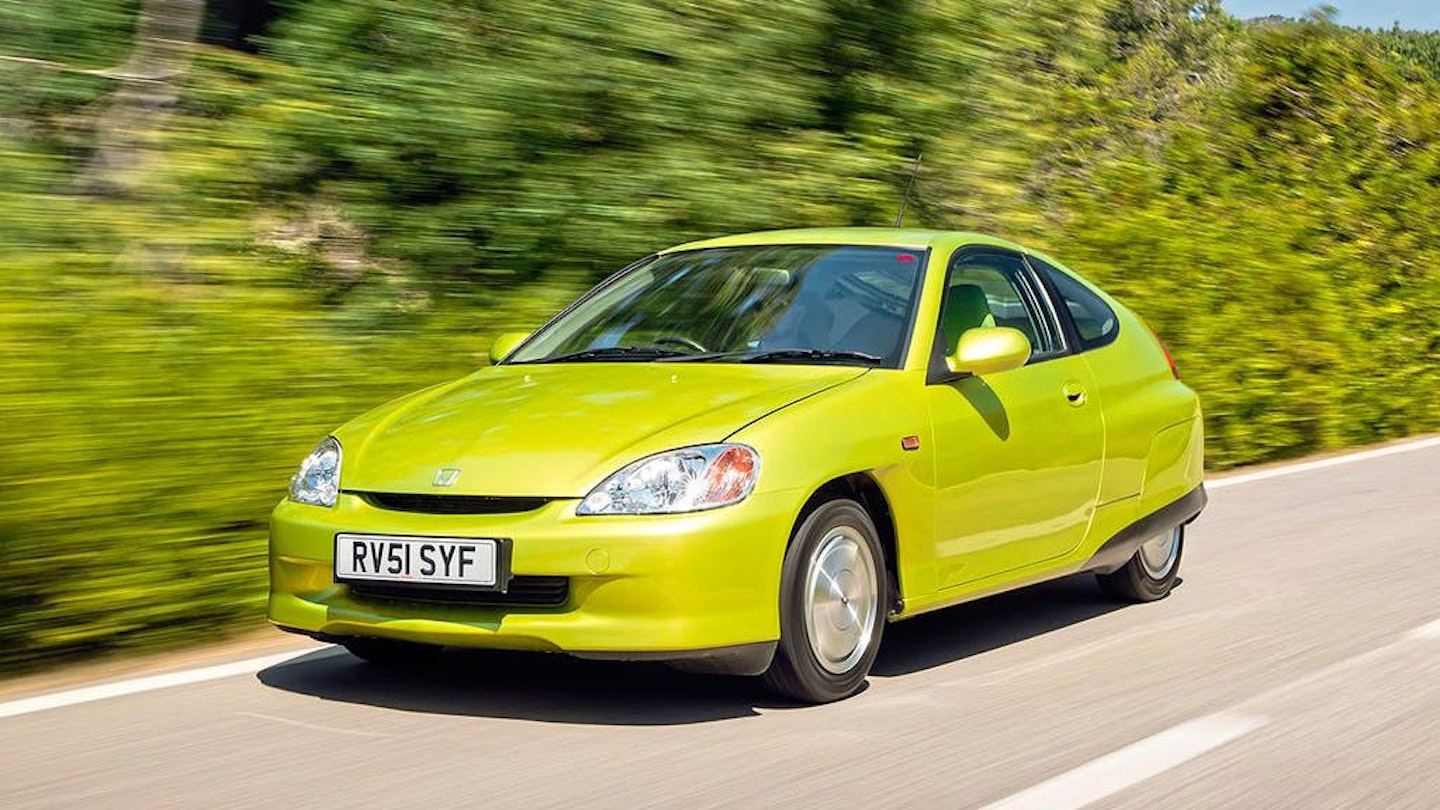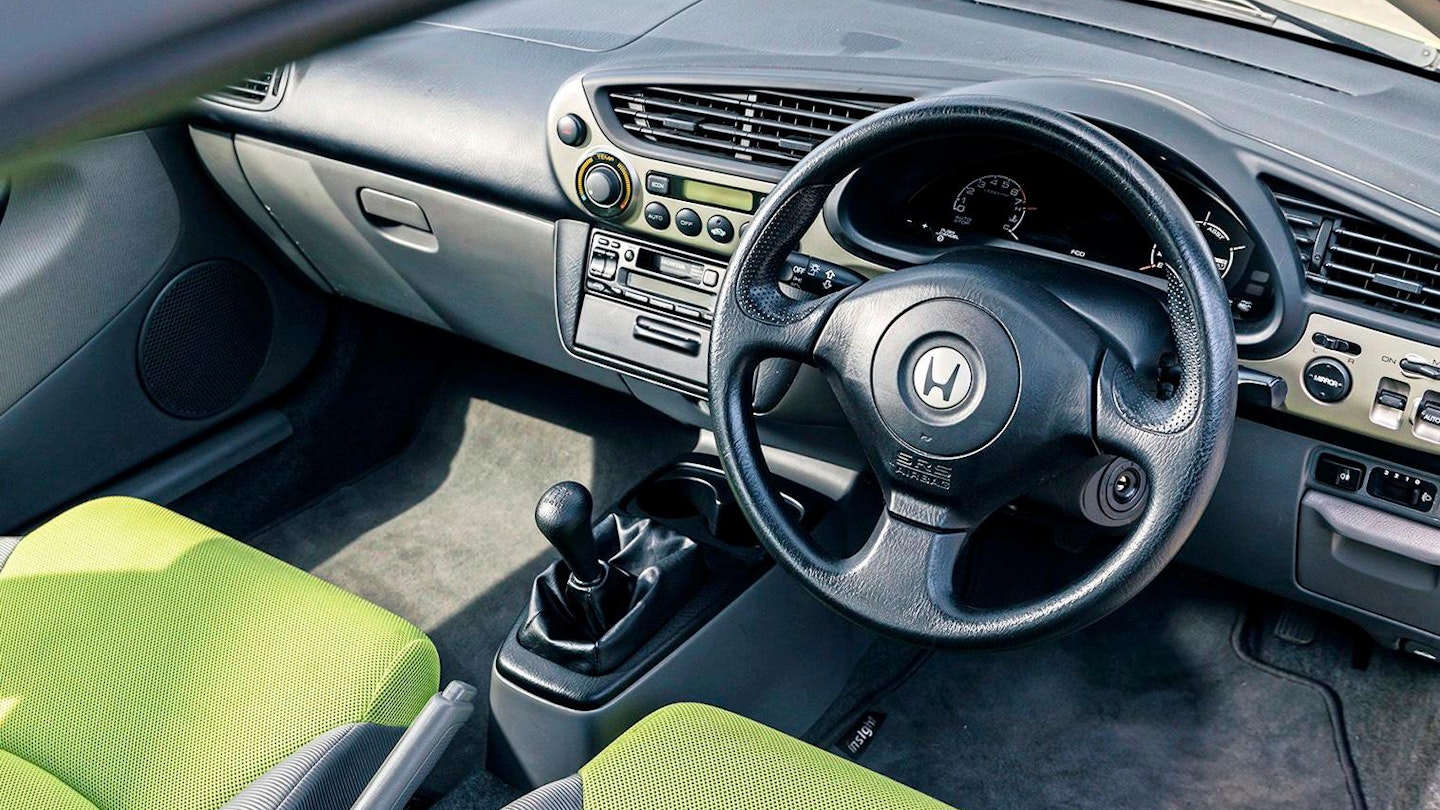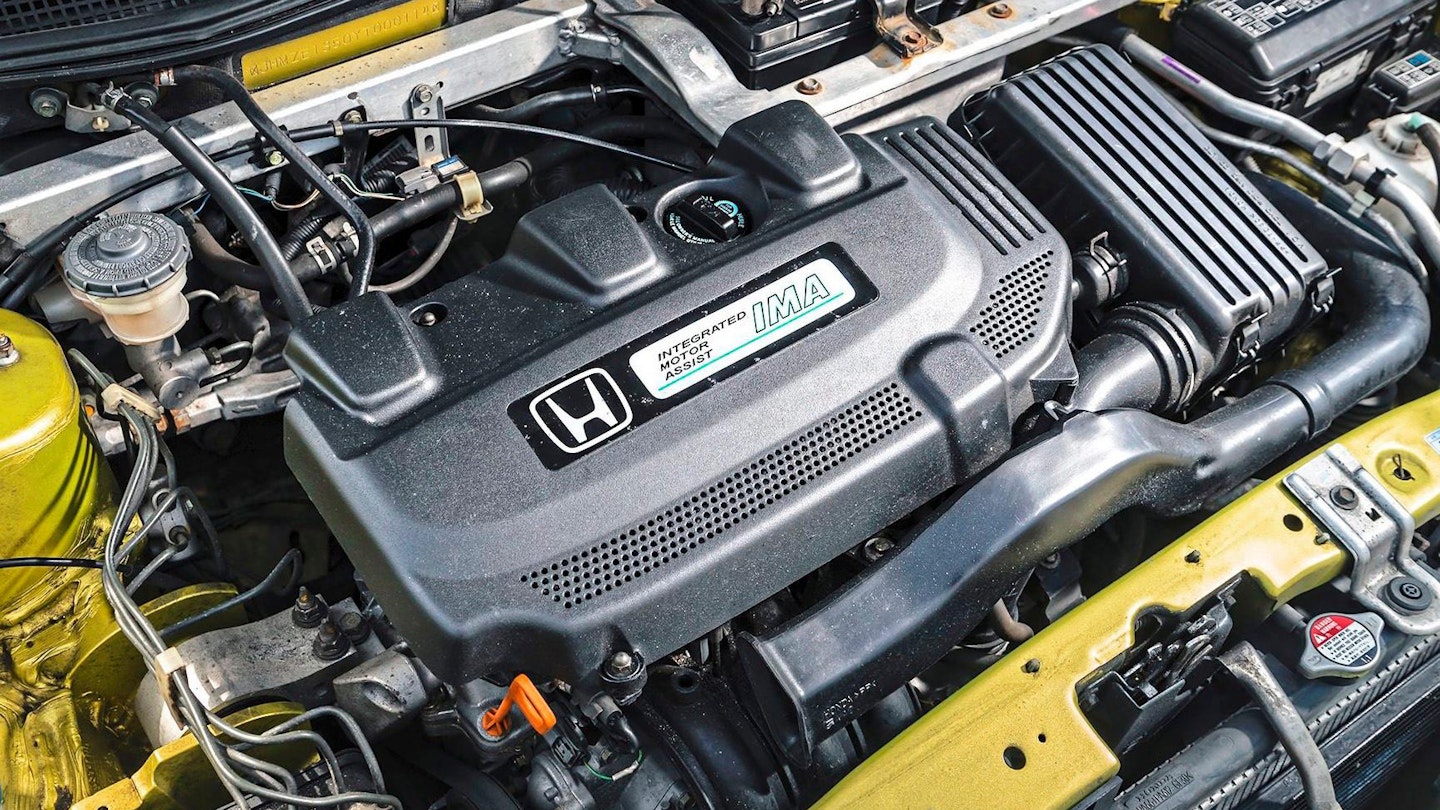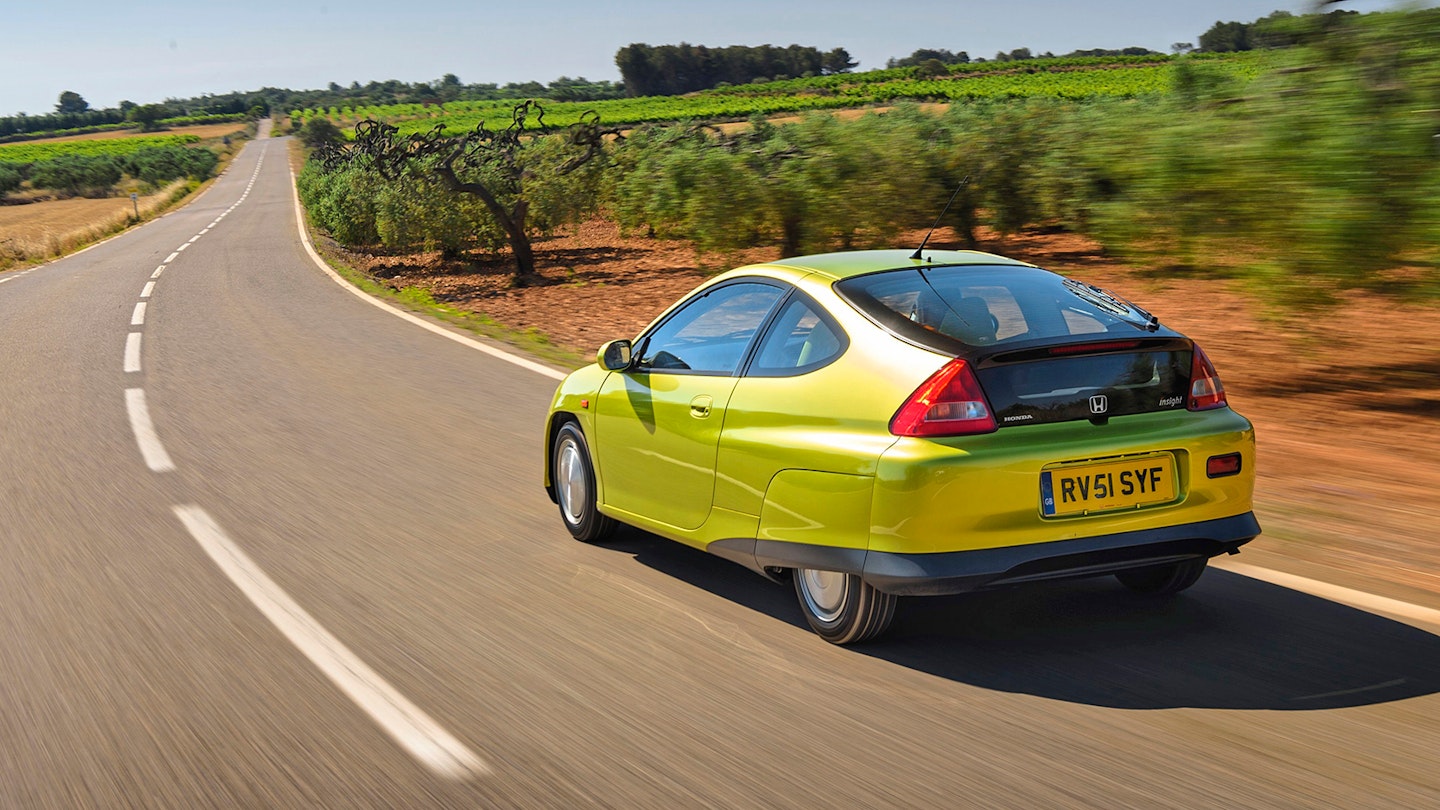[Buying Guide] Honda Insight MkI
Honda’s efficient and stylish hybrid has come of age as an interesting modern classic, but you need to know what to look for
Words JAMES WALSHE & RICHARD GOODING Photography DEAN SMITH, HONDA, & JONATHAN FLEETWOOD

Only 250 Insight ZE1s officially came to the UK, but it’s a car built by enthusiasts, for enthusiasts
The classic market is firmly focused on internal combustion-engined cars, but as time and the car itself evolve, electric or electrified models have begun to fall into our orbit. Some of these take the restomod route of a ‘traditional’ classic icon fitted with an electric powertrain, but others, such as the Honda Insight, were produced as electrified models from the very start.
Arriving just before the Millennium, the Insight was one of the first hybrids in the UK. Radical and now emerging as a modern classic, there is only one model of this pioneer. Its space-age styling pointed to a high-powered sports coupé, but its naturally aspirated 1.0-litre petrol engine and ‘Integrated Motor Assist’ – IMA – front-wheel-drive powertrain shattered any performance car dreams.
The ultra-thin 2.3in permanent magnet electric motor sandwiched between the engine and gearbox assists with acceleration and helps slow the car with regenerative braking, also acting as a starter, alternator and engine balancer. And while its 75bhp, 83lb ft of torque with hybrid assist, and 0-60mph time of 12 seconds won’t break any records, the little Honda’s slippery aerodynamics, lightweight aluminium structure, and stop-start system maximise fuel efficiency – up to an official in-period figure of 83.1mpg – and help to minimize emissions.
Built by enthusiasts, for enthusiasts, dynamically the Insight is an excellent drive. It feels eager despite its low power output, and has slick handling, even with skinny tyres. There’s also a pleasing gruffness to the VTEC engine, which uses similar variable valve timing and lift electronic control technology to that on a Honda Civic Type R. But the combination of just two seats and a high price meant the Insight didn’t catch on, and as a result, there aren’t many examples to choose from. Only around 250 were sold in the UK.
The good news is that the survival rate appears to have been very favourable in comparison to many cars of this era. Most MkI Insights are likely to be in the hands of enthusiasts, and that, along with the price of fuel, means the Insight’s popularity is high. There are an increasing number being imported from the Japanese Domestic Market and the car has seen a rise in prices over the past few years, no doubt helped by by increasing normalisation of electrified powertrains and the chance to test the water with a hybrid, before committing to make the switch to fulltime, zero-emissions motoring.

Biggest interior issue is rainwater leaks; check seatbelts and carpets for dampness
Which is which?
Previewed as the J-VX concept in 1997, the Insight MkI, or ZE1, was launched in November 1999 and was the first production vehicle to use Honda's IMA system. With a drag-coefficient of 0.25, it was the most aerodynamic production car to be built.
The choice of Honda Insight MkIs is made easy because on launch there was just a single trim level featuring a manual transmission with optional air conditioning. For the 2001 model year, a CVT model was added, although this never came to the UK.
Production of the ZE1-generation Honda Insight ended in 2006, with global sales of 17,020 units. European cars numbered a total of 392.
Bodywork and structure
The lightweight aluminium construction helped the Insight tip the scales at just 850kg, and means you won’t need to worry about traditional corrosion problems, but the bodywork can oxidise, so check for bubbles. Look for parts made of regular steel such as engine shields too, because these can be neglected. Repairing an accident-damaged Insight isn’t cheap so check for repair shortcuts. Also ensure the black rubbery aerodynamic mouldings under the front bumper are in place. The bumpers themselves and the rear wheelarch spats are quite difficult to find, and repairing cracks and scratches will likely be the most sensible course of action.

Three-cylinder petrol engine is robust, and can see 300,000 miles
Engine and gearbox
The 995cc three-cylinder ‘VTEC-E’ lean-burn petrol engine is a small, simple and well-engineered unit, not known for reliability issues, and Insights have been known to break the 300,000-mile mark without major disasters. Any judders when you let the clutch out could point to the clever rear engine mount needing replacement at around £185 from Honda.
The main weak area of the cable-operated fivespeed manual transmission is in the clutch input shaft bearing, so listen carefully for whining noises.
Synchromesh rings can also be troublesome with age on manual cars so check the gears shift cleanly. The CVT gearbox model was never officially sold in the UK. Commonly used on a range of other Hondas, these gearboxes not known for major problems, but can develop overheating issues and fluid leaks with mileage and age, although it’s worth changing the gearbox oil first to see if it makes a difference.

Study any paperwork that comes with your potential purchase, and as with any modern classic, dealer stamps and a stack of invoices are evidence of proper care. Cars with clogged EGR systems will exhibit hesitation and jerkiness, and check for dirty air filters too, because these point to neglect.
The Insight requires low rolling resistance tyres if you want to maximise economy. Cars that headed to the US wore Bridgestone Potenza RE-92 165/65R14 tyres when new, but they’re unavailable in the UK. The general advice is to buy the best that you can get, because good tyres will give up to 10 percent more miles per gallon. It’s also worth noting that only post-March 2001 Insights will attract zero car tax charges.
Honda dealers don’t encounter many MkIs, so we’d recommend using the club, forum and social media networks if you are thinking of buying one. There are some detailed dealer manuals available so it’s worth looking these up if you intend to do work on the car yourself, while fellow owners can offer advice when it comes to problem shooting.
Battery and electrics
A major part of the Insight’s mechanical make-up is the hybrid system’s battery. When you inspect any Insight, make sure any error codes haven’t been reset before you look at the car, because they may hide battery faults. A diagnostics reader is essential. Specialists such as Peter Perkins (solarvan.co.uk) offer dedicated Honda IMA OBDII diagnostic and monitoring tools for around £350, and owners on the enthusiast-run insightcentral.net can also advise on this process, telling you what the error codes mean.
The first thing you’ll need to check is if the battery has ever been changed. If it has, look for documents to prove when and how. Slow charging and discharging are signs of impending issues. A weak battery should reveal itself on an enthusiastic test drive. Watch for an illuminated IMA light, which may indicate the battery is in trouble, although it may also indicate issues with other systems in the car.

Insight’s integrated hybrid system was designed to use fuel very sparingly
‘The slippery aerodynamics, lightweight structure, and stop-start system maximise fuel efficiency’
Refurbishment of a worn battery is the cheapest course of action, while independent specialists such as solarvan.co.uk can provide a range of options, including renewal for around £2200, a job performed in just a few hours. For a few thousand pounds more, you can choose to swap the standard nickel-metal hydride – NiMH – battery to a lithium-polymer – LiPo – based unit. This will increase the battery range and can include a 13A plug conversion, too, which will turn the car into a plug-in hybrid electric vehicle – PHEV – meaning the battery can also be charged by plugging it in to a mains electricity supply. Around six converted cars are known to exist in the UK and will be expensive if they come to market.
With the hybrid system, this is a car that requires electrical safety precautions. There’s a danger of death when working on or inspecting an Insight battery, so consult a specialist. If there is an IMA issue, look below the fuse box and inspect the two grounding cables – they corrode and cause problems.
Interior
The cabin of the hybrid Honda is put together well. Insights are known for leaks, though – especially after windscreen replacements and around the roof area. Inspect the seat belts for dampness, because it may indicate a rainwater leak. It’s a simple fix, requiring re-sealing of the roof moulding clip holes in the door area and replacement of the clips themselves. Fellow owners and specialists can advise on the best course of action. Also check the carpets for dampness.
[ What to pay ]
► With few MkI Insights in the UK, prices can be hard to ascertain. The car is seen as a possible modern classic, but it’s not universally accepted, affecting prices. Early cars with more than 120,000 miles go for between £3000-£4000, but you’ll likely also need a replacement battery system.
► Tidy mid-2000s cars can fetch £5k-£7k.
► The best low mileage Insights fetch £8000-£9000.
► Insights that have covered few miles and have a new, not reconditioned, battery system can cost £12k-£13k.
Subscribe to Classic Cars today. Choose a Print+ Subscription and you'll get instant digital access and so much more. PLUS FREE UK delivery.
